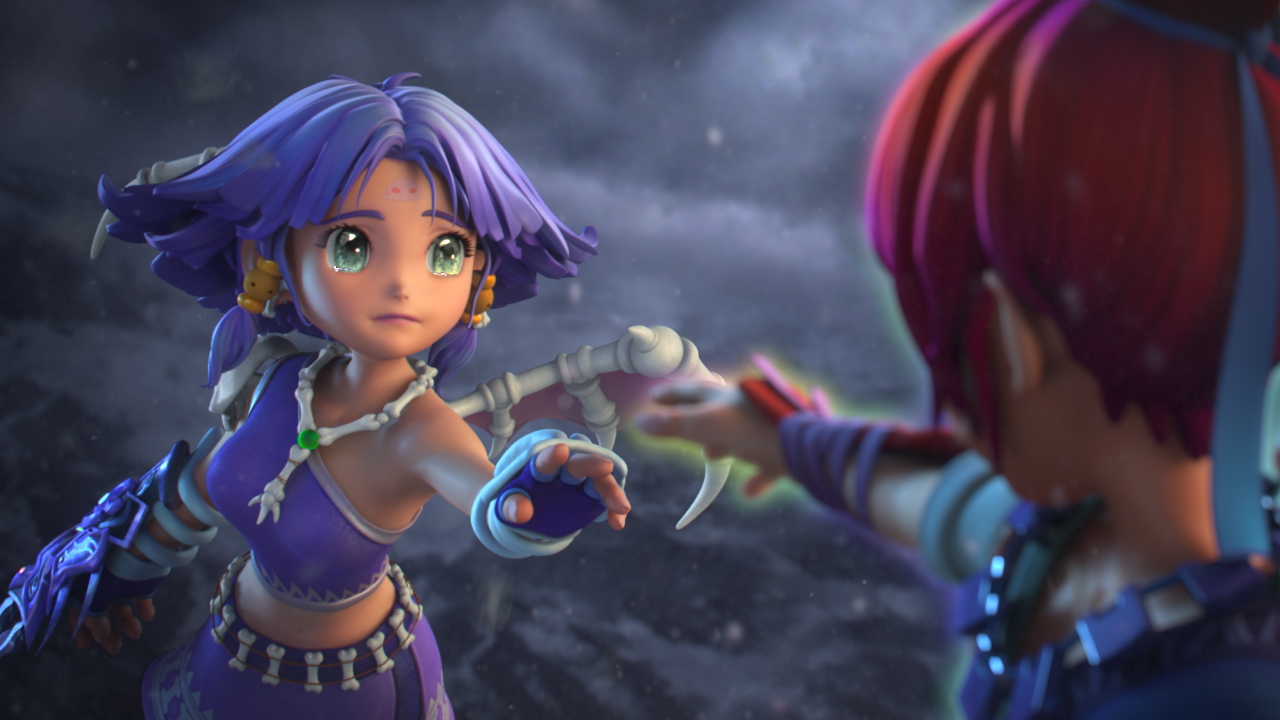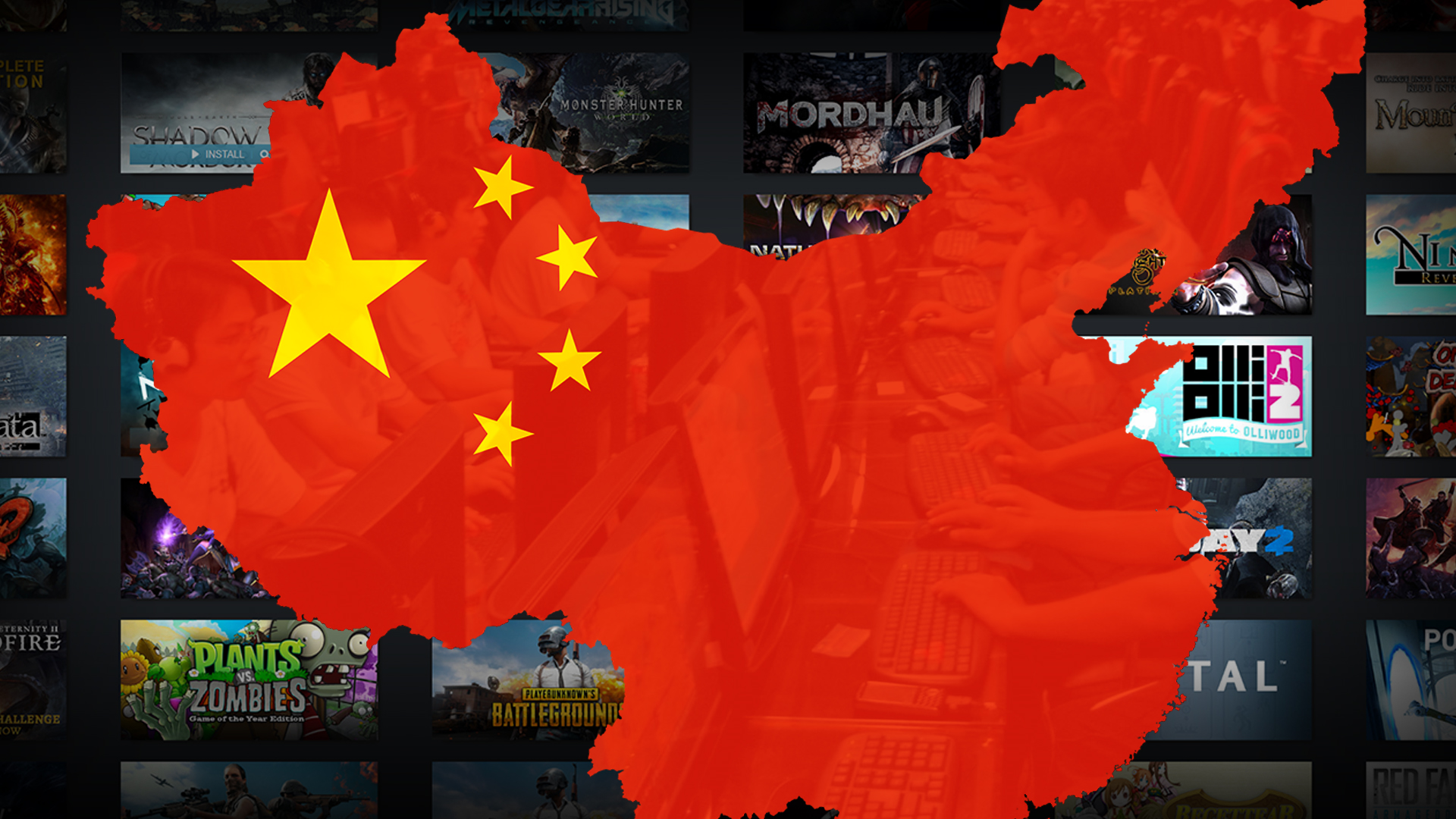The 5 biggest PC games in China that you'll probably never play
MMOs, Counter-Strike clones, and a Final Fantasy-esque RPG series—China's games industry is more diverse than you might think.

Despite having 312 million PC Gamers, China's language barrier and government censorship makes it easy to forget that it's the world's largest PC gaming scene. Without access to many of the websites and platforms we're familiar with, those living in mainland China have to rely on entirely different ones: They use Yokou instead of YouTube, WeChat instead of Facebook, and Huya instead of Twitch. Likewise, many Chinese gamers play videogames most us will have never heard of.
That's slowly changing thanks to the availability of Steam in China (PUBG owes much of its success to Chinese players, for instance), but many of China's top PC games still aren't accessible to English-speaking players. To help lift the veil, here's some of the most historically popular PC games in China that you'll probably never play.
Fantasy Westward Journey
Developer: NetEase
Release: 2001
Total players: 310 million as of 2015
That stereotype about Asian players loving grindy MMOs is partly true and, at least in China, the mind-blowing success of Fantasy Westward Journey and its sister Westward Journey 2, which released a year later, are to blame. Both MMOs are developed by NetEase, use the same game engine, and share many of the same features, but each has a distinct aesthetic that appeals to different audiences. It'd be like if World of Warcraft had a mirrored MMO that was more mature, violent, and sexy.
Between these two MMOs and their mobile versions, Fantasy Westward Journey is one of the biggest and most successful games in the world. It's frequently the top-grossing PC game worldwide and, to date, the series has brought in an estimated $6.5 billion. As of 2015, the PC versions of these MMOs had a total of nearly 400 million players.
Though the mobile version plays like an action RPG, the original PC versions both have turn-based group combat where you can summon monsters to help you fight. The series, like a lot of domestically developed Chinese games is an adaptation of the literary classic Journey to the West and is deeply rooted in Chinese mythology and history, which is probably why it resonated so deeply with Chinese gamers. Though they borrow a lot of ideas, these sister MMOs also have some unique systems like being able to marry and have children who then grow up (or you can auction them off for adoption if you're a cruel bastard) or the ability to build and run your own stores.
Fantasy Westward Journey is also notable for hosting the largest virtual protest in the world when one of the top-five guilds was forcefully disbanded by NetEase due to racism. In July of 2006, moderators placed a player named "Kill the little japs" (when translated) in prison and forced them to change their name. A day later, the developer also announced that the guild this player had founded called "The Alliance To Resist Japan" would be disbanded. With over 700 members, this guild was one of the top-five groups in the game.
Keep up to date with the most important stories and the best deals, as picked by the PC Gamer team.
Over the course of days, 80,000 players swarmed that particular server to protest the ban, creating crippling lag. It's not clear exactly how the event ended or what happened to the offending player and guild.
Crossfire
Developer: Smilegate
Release: 2007
Players: 660 million as of 2018

China's PC gaming scene is enormous, influential, and rapidly changing. Staying up to date with it isn't easy, so you should read our in-depth report that covers the past, present, and future on PC gaming in China.
If you watched Microsoft's E3 2019 presentation this year, you might've been a bit confused by one announcement, CrossfireX, a new FPS developed by Korean Smilegate Entertainment with Remedy Games helping out with a singleplayer campaign. What that brief announcement didn't really communicate, however, is that Crossfire (the original version that CrossfireX will be based on) is the world's most popular videogame boasting an astonishing 660 million registered accounts. To put that in perspective, Fortnite only has 250 million total registered accounts as of early 2019. First released back in 2007, Crossfire is one of the top 10 most successful games of all time, grossing over $10 billion dollars—putting it comfortably in the realm of franchises like Final Fantasy, Street Fighter, and Warcraft.
What makes that even more astonishing is that Crossfire is basically a shameless Counter-Strike 1.6 clone on steroids—it even uses a lot of the same sound effects and graphics as the original mod. But that's where the similarities end as Crossfire has readily expanded to include a whopping 400 guns that players can use across 110 different modes and maps. There's still the usual team deathmatch and demolition modes, but Crossfire also includes a ton of novelty modes like Ghost, which turns one team invisible but they can only use knives, and Escape, where one team must get to a portal while the other team tries to prevent them.
This abundance of more chaotic, arcadey game modes makes Crossfire extremely easy to play—a far cry from the tense and unforgiving Counter-Strike. Crossfire's outdated graphics might also seem like a negative, but it means the game can run on practically any system. It's that more casual pace and low hardware requirements that made Crossfire a hit across China and the rest of Southeast Asia.
As you would expect, though, nearly everything in Crossfire is heavily monetized and wrapped up in a progression system where players earn currency to spend on new weapons, skins, and various boosts including armor bonuses that make you harder to kill. Weapons have a durability meter that depletes as you use them, forcing you to repair them every so often for in-game currency or real money. Unlike CS:GO, Crossfire heavily leans into pay-to-win systems that reward those willing to shell out.
The Legend of Sword and Fairy (Chinese Paladin)
Developer: Softstar
Release: 1995
The prevailing wisdom of the Chinese games industry is that if it's not an online free-to-play game then no one is going to play it, but The Legend of Sword and Fairy (also called Chinese Paladin) is the exception. It's the Chinese equivalent of Final Fantasy, a beloved RPG that spawned over 22 sequels and spin-offs (including two MMOs, and several management sims) in addition to three separate TV series.
But all of that started with the original The Legend of Sword and Fairy, a 1995 DOS-based RPG (later remade for Windows 98) that evokes classic JRPGs with turn-based battles and a sprawling, tragic story. While console gamers worldwide tear up thinking about Aerith's death in Final Fantasy 7, Chinese gamers get equally misty-eyed remembering Zhao Ling'er's tragic sacrifice to save the protagonist from an evil water demon.
The Legend of Sword and Fairy's tragic, sprawling story made it an instant classic in China. "It’s a gripping tale, one of the best stories in any RPG I've played," Games historian Felipe Pepe wrote. "If The Witcher is a folklore-based RPG, Chinese Paladin feels like an epic poem in video-game form."
The Legend of Sword and Fairy also introduced a few novel ideas that we haven't seen used in many other games. As Pepe notes, one character possesses an ability that can only be used nine times throughout the entire game. Another cool touch is that powerful attacks will destroy and scar the surrounding battlefield, making fights feel more destructive.
If you're interested in checking it out, an unofficial English translation is available.
Zhengtu Online
Developer: Giant Interactive
Release: 2007
Players: 10 million players as of 2008
Think of the greediest, most predatory free-to-play game you can and I bet Zhengtu Online (ZT Online) will far exceed it. In addition to being the first game to institute loot boxes, ZT Online was hellscape of paid level boosts, equipment upgrades, and RNG-based progression systems. It's a game that spawned countless rumors of people losing their houses and cars in order to pay for the exponentially rising cost of their characters. And with over 10 million players in 2008, ZT Online was one of the most popular MMOs in China.
It's hard to imagine an exploitative game being that alluring, but ZT Online struck a chord by aggressively marketing itself to China's rising upper-middle class that had money to spend but not a lot of time to grind. Nearly everything in the game could be bought outright, but ZT Online's true genius was that it pitted its own players against each other in endless wars for territory, creating a vicious cycle where players felt compelled to keep buying boosts and opening loot boxes to stay competitive or risk losing everything.
This is all famously documented in an amazing feature that first appeared in Chinese newspaper Southern Weekly about a woman named Lu yang who bought here way to the top and built an empire before growing disenfranchised with ZT Online's predatory microtransactions and endless wars.
To give you an idea of how ruthless the game is, ZT Online's monsters don't drop equipment like in most other MMOs. Gear is either bought through NPC vendors or awarded from loot boxes. To get new gear for her level 150 character, Lu Yang was having to buy and open around 5,000 chests in addition to the 5,000 yuan (roughly $1,000) she was spending to max out that gear's stats through crafting. And even at level 150, Lu Yang could still be killed in seconds by level 170 players who were spending tens of thousands of yuan to stay on top. At one point, ZT Online implemented a change that made it impossible to trade, sell, or destroy items, forcing players to buy inventory expansions just to carry useless gear that they could never make use of.

Happy Farm
Developer: 5 Minutes
Release: 2008
Players: 23 million players a day
Here's some irony: Zynga's wildly successful Facebook game called Farmville was actually a rip-off of a Chinese social network game called Happy Farm. And just like Farmville, Happy Farm was ridiculously popular. At its peak, 23 million people were playing it every day. It was so popular that Tencent, one of Happy Farm's publishers, had to limit new players to just 2 million a day on its QQ social media platform to stop the servers from imploding.
Interestingly enough, Happy Farm is directly inspired by the Harvest Moon series of farming sims. But unlike Harvest Moon, which has a big emphasis on building relationships with NPCs, Happy Farm is more about logging in to manage crops and livestock and working with other players to achieve communal goals. Unlike Farmville and the countless other knock offs, Happy Farm was also mercilessly competitive and players could steal your crops if you weren't constantly logging in to protect them.
Because Happy Farm released before mobile gaming blew up in China, it existed in a weird time where anxiety over gaming addiction was at an all time high. Rumors quickly circulated of broken relationships, lost jobs, and players setting alarms to wake up in the middle of the night to protect their crops from would-be thieves. In the end, though, Happy Farm was doomed to quickly die like most social web games as mobile gaming rose to prominence. Happy Farm was closed in 2017 but other versions of it, including mobile spinoffs, are still around.
With over 7 years of experience with in-depth feature reporting, Steven's mission is to chronicle the fascinating ways that games intersect our lives. Whether it's colossal in-game wars in an MMO, or long-haul truckers who turn to games to protect them from the loneliness of the open road, Steven tries to unearth PC gaming's greatest untold stories. His love of PC gaming started extremely early. Without money to spend, he spent an entire day watching the progress bar on a 25mb download of the Heroes of Might and Magic 2 demo that he then played for at least a hundred hours. It was a good demo.


